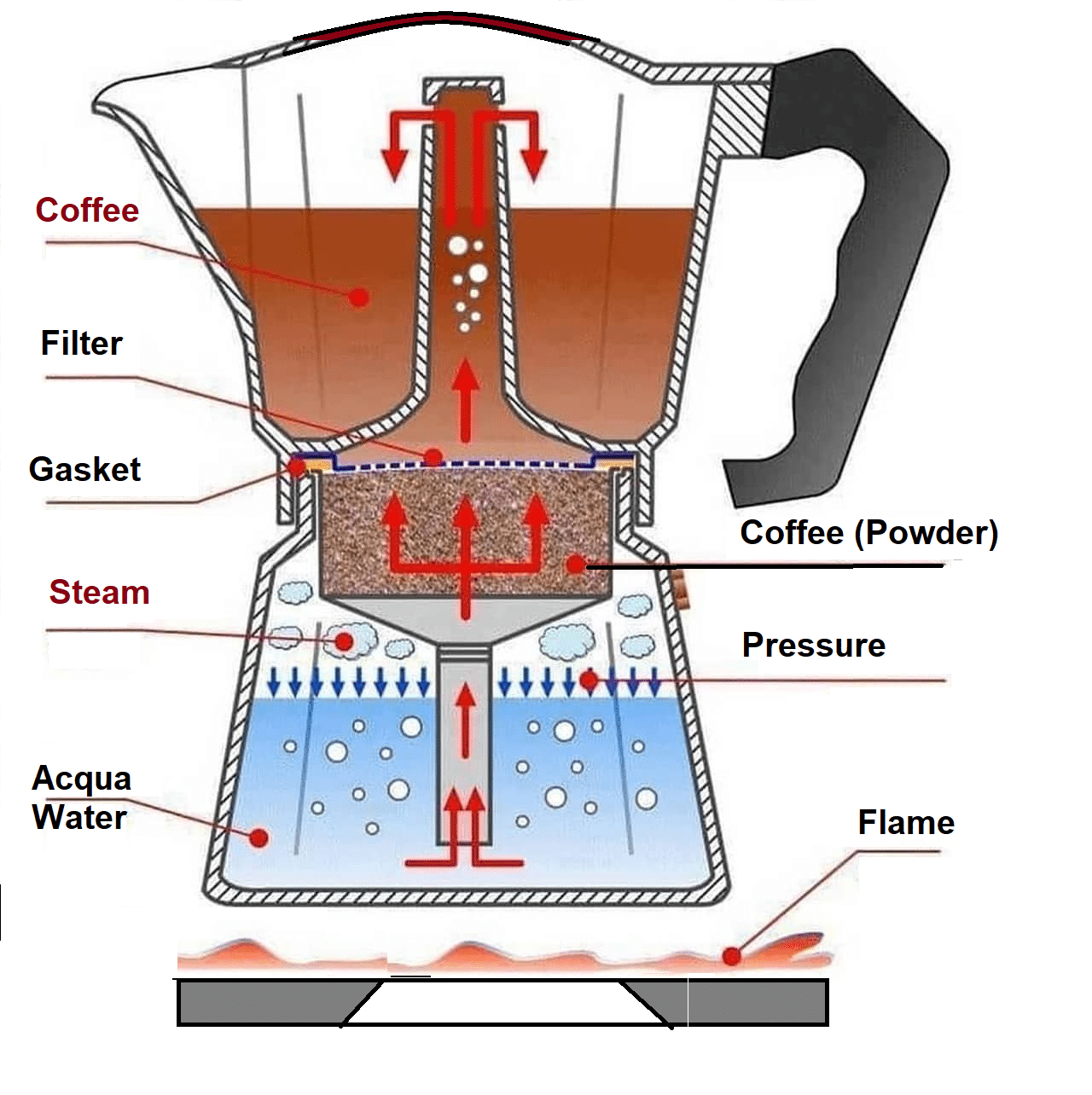Humidity levels can significantly impact our comfort, health, and the condition of our living spaces.
Imagine walking into a refreshingly dry and comfortable space, free from that sticky clamminess often associated with high-humidity environments.
The secret behind this transformation lies within the simple yet ingenious mechanisms of dehumidifiers.
By employing a combination of cooling coils, fan-driven air circulation, and condensation collection systems, these devices effectively extract excess water vapor from the air, leaving behind a more balanced indoor environment conducive to improved well-being and preservation of property.
This article will delve into the fascinating processes through which dehumidifiers regulate humidity levels within various settings, shedding light on their practical applications and benefits for individuals seeking greater control over their living conditions.
Table of contents
- What is Dehumidifier?
- What are the Components of a Dehumidifier?
- Procedure for Dehumidification
- What are Dehumidifier Types?
- The Advantages of Having a Dehumidifier
- 1. Mold & Mildew Avoidance:
- 2. Improved Air Quality Inside:
- 3. Safekeeping of Property:
- 4. Lessening of Dust Mite Activity
- 5. Coziness and Wellness
- 6. Preventing Water Damage and Condensation:
- 7. Enhancing HVAC Efficiency:
- 8. Promoting Respiratory Health:
- 9. Improving the Quality of Your Sleep:
- 10. Reducing Energy Costs:
- Does a Dehumidifier Cool a Room?
- FAQs
- Conclusion
- References
- Recommendations
What is Dehumidifier?
A dehumidifier is a powerful appliance designed to regulate the humidity level in indoor spaces, making it an essential tool for maintaining a comfortable and healthy home environment.
By removing excess moisture from the air, dehumidifiers help prevent mold, mildew, and musty odours, reducing the risk of allergy triggers such as dust mites.
Furthermore, these devices can protect valuable possessions like books, clothing, and electronic equipment from damage caused by high humidity levels.
The operation of a dehumidifier involves drawing in moist air through a fan and passing it over cooling coils that condense the water vapor into liquid form. This collected moisture is drained from the unit while the dry air is released back into the room.
Read Also: How Does Dimmer Switches Work ? Full Operation Guide
What are the Components of a Dehumidifier?
A dehumidifier is a home appliance that lowers humidity levels and improves indoor comfort and health by drawing moisture out of the air. To accomplish this, a dehumidifier’s essential parts cooperate.
Compressor:
The compressor drives the system’s refrigerant circulation and is the dehumidifier’s central component. It raises the temperature of the refrigerant gas by compressing it into a high-pressure liquid.
Condenser Coils:
The dehumidifier’s external condenser coils cool the compressed refrigerant liquid, which causes it to condense into a liquid form. In doing so, the refrigerant cools the air by releasing the heat it has taken in from it.
Evaporator Coils:
The warm, humid air that flows over the dehumidifier’s evaporator coils absorbs heat. The moisture in the air condenses into droplets as it comes into contact with the cool evaporator coils, and these droplets are gathered in a drip tray.
Fan:
The fan draws warm, humid air from the room over the evaporator coils to circulate the air inside the dehumidifier. The dehumidifier can effectively remove moisture from the air because of this constant circulation.
Humidistat:
The humidistat is a sensor that keeps track of the air’s humidity near the dehumidifier. It ensures the dehumidifier maintains the appropriate humidity level by managing the compressor and fan.
Control Panel:
With the control panel, the user can examine indicators such as water tank status and humidity level, manually or automatically operate the dehumidifier and set the desired humidity level.
Read Also: How to Remove Laminate Flooring | Full Guide with Photos
Procedure for Dehumidification
The dehumidifier’s technique of extracting moisture from the air is called the dehumidification process. It entails actions that successfully reduce humidity and produce a more cozy and salubrious interior atmosphere.
Air Intake:
A fan draws warm, humid air into the dehumidifier. The air can enter the dehumidifier’s internal system by the fan’s suction force, which draws air from the surrounding area.
Evaporator Coils:
The dehumidifier’s internal evaporator coils are essential for removing moisture from the air. To improve their capacity to draw in and condense water vapor, these coils are usually composed of cold metal and coated with a hydrophilic material.
Moisture Condensation:
Warm, humid air causes a temperature reduction as it moves across cold evaporator coils. The moisture in the air condenses into liquid droplets as a result of this temperature change, just like water does on a cold glass on a hot day.
Moisture Collection:
A drip tray at the dehumidifier’s base collects the condensed water droplets extracted from the air. This drip tray, usually made of plastic or metal and intended to stop leaks or spills, acts as a reservoir for the gathered water.
Cooled Air Release:
The air is then released into the space after dehumidifying and losing moisture due to condensation. The surrounding environment has less humidity due to this cooled, drier air.
Refrigeration Cycle:
A refrigeration cycle like air conditioners and refrigerators powers the dehumidification process. Heat from the air is absorbed by a refrigerant, usually a fluid such as R-410A, and then released into the surrounding environment.
Compressor:
Compressing the refrigerant gas into a high-pressure liquid is the compressor’s primary function. It is the central component of the refrigeration cycle. The refrigerant may absorb heat more efficiently because of the increased temperature and pressure caused by this compression.
Condenser Coils:
The condenser coils, usually found outside the dehumidifier, function as the refrigeration cycle’s heat rejection component. The high-pressure refrigerant liquid condenses back into a liquid condition as it travels through the condenser coils, releasing the heat it had been absorbing from the surrounding air.
Refrigerant Expansion:
Next, an expansion valve lets the condensed refrigerant liquid expand, reducing its temperature and pressure. The refrigeration cycle is completed when the refrigerant enters the evaporator coils, ready to absorb heat once more, thanks to its expansion.
Continuous Dehumidification:
The dehumidification process continues nonstop until the target humidity level is attained and maintained. The humidistat, a sensor that measures the humidity in the air, regulates the compressor and fan to keep the dehumidifier operating at the desired humidity level.
Read ALSO: Read ALSO: How to Do Faucet Repairs in Less time | Full Guide
What are Dehumidifier Types?
Dehumidifiers are vital gadgets that eliminate excess moisture from the air, thereby preserving a comfortable and healthy interior atmosphere. They are available in different varieties, each with special characteristics and uses. An outline of the many kinds of dehumidifiers and their appropriate applications is provided below:
Carry-along dehumidifier
The most popular dehumidifiers are portable for small to medium-sized spaces like basements, bathrooms, and bedrooms. Their portability, low weight, and small design make them perfect for short-term or spot dehumidification applications.
Decanterants with desiccant
Desiccant dehumidifiers work exceptionally well in low-temperature settings where traditional refrigerant dehumidifiers find it difficult to function properly.
They are appropriate for places like crawl spaces, garages, or cold storage rooms because they use a desiccant substance, such as silica gel, to absorb moisture from the air.
Dehumidifiers with an energy star
Energy Star dehumidifiers are an economical and environmentally responsible option because they have been certified to fulfil stringent energy efficiency criteria. They have less environmental impact and lower energy costs because they use less energy while still being able to dehumidify.
Dehumidifiers with Low-Grain Refrigerant (LGR):
LGR dehumidifiers are made especially for humid environments or where mould might grow. They efficiently control humidity levels even in difficult situations because they employ a unique refrigerant that can function at lower temperatures.
Commercial Humidifiers
Large-scale dehumidification in commercial or industrial environments, including warehouses, factories, or building sites, is the intended purpose of industrial dehumidifiers. Their robust structure and high capacity can withstand harsh conditions and substantial moisture volumes.
Completely Indoor Dehumidifiers:
The central air conditioning system incorporates whole-house dehumidifiers to offer consistent dehumidification throughout the house. Larger homes or those with recurring humidity problems are the perfect fit for them.
Expensive Dehumidifiers:
Due to their great moisture-handling capability, high-capacity dehumidifiers are ideal for high-humidity business spaces, water damage repair projects, and flooded locations.
Dehumidifiers with Pumps Integrated in:
The drip tray doesn’t need to be manually emptied using dehumidifiers with built-in pumps because the collected water is automatically emptied into a sump pump or drain. For installations in remote areas or constant dehumidification, this capability is beneficial.
Dehumidifiers with Intelligent Functions:
Wi-Fi connectivity and smartphone app compatibility are features found in smart dehumidifiers, which enable users to monitor and operate the device from a distance. In addition, they can schedule settings, offer real-time humidity readings, and get notifications when the drip tray needs to be emptied.
The size of the area that needs to be dehumidified, the severity of the humidity issue, the temperature, and personal preferences are some of the aspects that must be considered when selecting the best type of dehumidifier.
Choosing the right kind and volume of dehumidifier for your needs might be more accessible by speaking with an expert.
Read Also: How to Increase PH in Pool | Practical Steps
The Advantages of Having a Dehumidifier
Dehumidifiers are essential for preserving a comfortable and healthy interior atmosphere since they are good at eliminating surplus moisture from the air. They provide a host of advantages that enhance general well-being and air quality.
1. Mold & Mildew Avoidance:
Overly damp conditions create a perfect environment for the growth of mold and mildew, which can lead to various health issues, allergies, and even structural harm to structures. Dehumidifiers aid in regulating humidity levels, which prevents the development and dissemination of these dangerous microbes.
2. Improved Air Quality Inside:
Strong musty smells, stuffy air, and a moist feeling can all be caused by high humidity. Dehumidifiers efficiently eliminate surplus moisture, resulting in a cleaner, healthier indoor atmosphere by diminishing airborne impurities such as dust mites and allergens.
3. Safekeeping of Property:
Electronics, wood floors, furniture, and other goods can all be harmed by humidity. Dehumidifiers keep your belongings intact by halting mildew growth, corrosion, and warping.
4. Lessening of Dust Mite Activity
Microscopic allergens called dust mites proliferate in humid conditions. Dehumidifiers have the potential to drastically lower dust mite populations, which will lessen allergy symptoms and improve respiratory health.
5. Coziness and Wellness
Optimal humidity levels facilitate a comfortable and healthy living environment. Dehumidifiers create a more comfortable indoor atmosphere by lowering the impression of clamminess and reducing easier breathing.
6. Preventing Water Damage and Condensation:
Overly high humidity can cause condensation to form on walls, ceilings, and windows, which could result in water damage. Dehumidifiers shield your house from moisture-related problems and assist in preventing condensation.
7. Enhancing HVAC Efficiency:
Because they must work harder to remove moisture from the air, air conditioners use more energy in humid climates. Dehumidifiers can lessen the strain on your air conditioner, saving energy costs and increasing efficiency.
8. Promoting Respiratory Health:
Asthma, allergies, and bronchitis are respiratory ailments that can worsen with high humidity. Dehumidifiers ease breathing problems and support respiratory health by helping to maintain appropriate humidity levels.
Does a Dehumidifier Cool a Room?
How an air conditioner cools a room differs from how a dehumidifier does it. By removing moisture from the air, dehumidifiers can help a room feel colder by draining sweat and improving breathing conditions. Dehumidifiers do not, however, truly reduce the temperature of the air.
The act of dehumidification distributes heat into the space, which explains why. The compressor and fan, which are also found in air conditioners, are what produce this heat.
Consequently, a dehumidifier’s overall impact is to make a room feel somewhat colder—though not as cold as an air conditioner.
Dehumidifiers, however, can still help cool a space under hot and muggy conditions. This is due to their potential to facilitate breathing and lessen a stuffy feeling. They can also aid in preventing condensation on walls and windows, which can damage water.
A dehumidifier can be an effective tool if you’re trying to chill space in a hot and muggy environment. It’s crucial to remember that they won’t cool the room as well as an air conditioner.
FAQs on How Does Dehumidifiers Work
A dehumidifier draws moisture out of the air in your house until the relative humidity reaches the desired low. A decent dehumidifier should be able to sustain its comfort level once it reaches this point without your help!
For your residence, relative humidity of 50% is generally comfortable. This will keep mold from growing, safeguard your possessions, and manage the dust mite population. Humidity shouldn’t be decreased below 45–50%. To do so would be inefficient and result in higher energy costs.
Conclusion
Dehumidifiers are essential devices that effectively reduce the humidity levels in indoor spaces. Dehumidifiers are crucial in maintaining optimal humidity levels by drawing in moist air, extracting moisture, and circulating dry air into the environment.
The process involves a combination of cooling, heating mechanisms, condensation, and evaporation.
Understanding how dehumidifiers work can help individuals make informed decisions about choosing the right unit for their needs.
Investing in a high-quality dehumidifier for home use or industrial applications can significantly improve air quality and reduce potential moisture-related issues.





